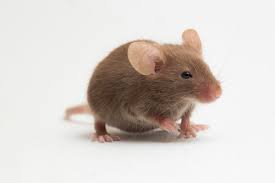What Kind Of Damage Does A Rodent’s Bite Cause?
When it comes to pest control, rodents are the most common to be found in and around buildings. They can be difficult to spot because they’re small and scurry quickly, but with a little help from our trusted pest control company, you’ll find that they won’t be a problem anymore!

Rodent’s Bite Damage
A rodent’s bite can cause all sorts of damage. Their teeth are sharp and their bites can be quite painful. They can also transmit diseases through their bites. Some of the damage that a rodent’s bite can cause includes:
– Infection: Rodents can transmit diseases through their bites. These diseases can include rabies, hantavirus, and leptospirosis.
– Allergic reactions: Some people may have an allergic reaction to a rodent’s bite. This can cause symptoms such as swelling, redness, and itching.
– Pain: A rodent’s bite can be quite painful. The pain may last for a few minutes or it may last for several hours.
– Bleeding: A rodent’s bite can cause bleeding. The amount of bleeding depends on how deep the bite is.
– Scarring: A rodent’s bite can also cause scarring. The scar may be visible or it may be hidden beneath the skin.
Types of Rodent Bites
There are three types of rodent bites: incisor, molar, and cheek. Incisor bites are the most common type of bite, and occur when the rodent’s front teeth sink into the flesh. This type of bite can cause minor to moderate damage, depending on the size of the rodent and the depth of the bite. Molar bites are less common, and occur when the rodent’s back teeth sink into the flesh. These bites can cause moderate to severe damage, depending on the size of the rodent and the depth of the bite. Cheek bites are the least common type of bite, and occur when the rodent’s teeth sink into the flesh near its cheeks. These bites can cause minor to severe damage, depending on the size of the rodent and the depth of the bite.
Signs, Symptoms, and Treatment Of Rodent Bites
If you suspect that you or your child has been bitten by a rodent, it is important to watch for signs and symptoms of infection and seek medical attention if necessary. A rodent’s bite can cause a number of different types of damage, depending on the size and type of rodent involved. The most common consequences of a rodent bite are puncture wounds, lacerations, infection, and/or rabies.
Puncture Wounds: Puncture wounds from a rodent bite are typically small and may not bleed much. However, these wounds can be deep and may become infected if not properly treated.
Lacerations: A laceration is a type of wound that is caused by a sharp object such as a tooth or claw. Lacerations from a rodent bite can range from superficial to deep. Deep lacerations may require stitches to close the wound and prevent further damage.
Infection: An infection can occur with any type of wound, but is more likely to occur with puncture wounds or lacerations. Signs of infection include redness, swelling, pain, pus or drainage from the wound, and fever. If you suspect that your wound is infected, it is important to see a doctor
Prevention Factors
There are many ways to prevent rodents from biting you. Some of these include:
– Keeping your home and yard clean and free of debris.
– If you have pets, keep them well-groomed and free of fleas.
– Store food in airtight containers and keep it off the ground.
– Use traps or baits to catch and remove rodents from your property.
– Seal up any cracks or holes in your home’s foundation or exterior walls.
Conclusion
Hopefully this article has helped to clear up any confusion about the damage that a rodent’s bite can cause. While it is true that their bites can be painful, the reality is that the vast majority of cases are not serious and will heal without any long-term problems. However, if you do experience severe pain or swelling, it is always best to consult with a medical professional to ensure that there is no underlying infection or other problem. You can contact us for eradicating any level of rodent infestation.
Published on: August 12, 2022
Last updated on: June 8, 2023
